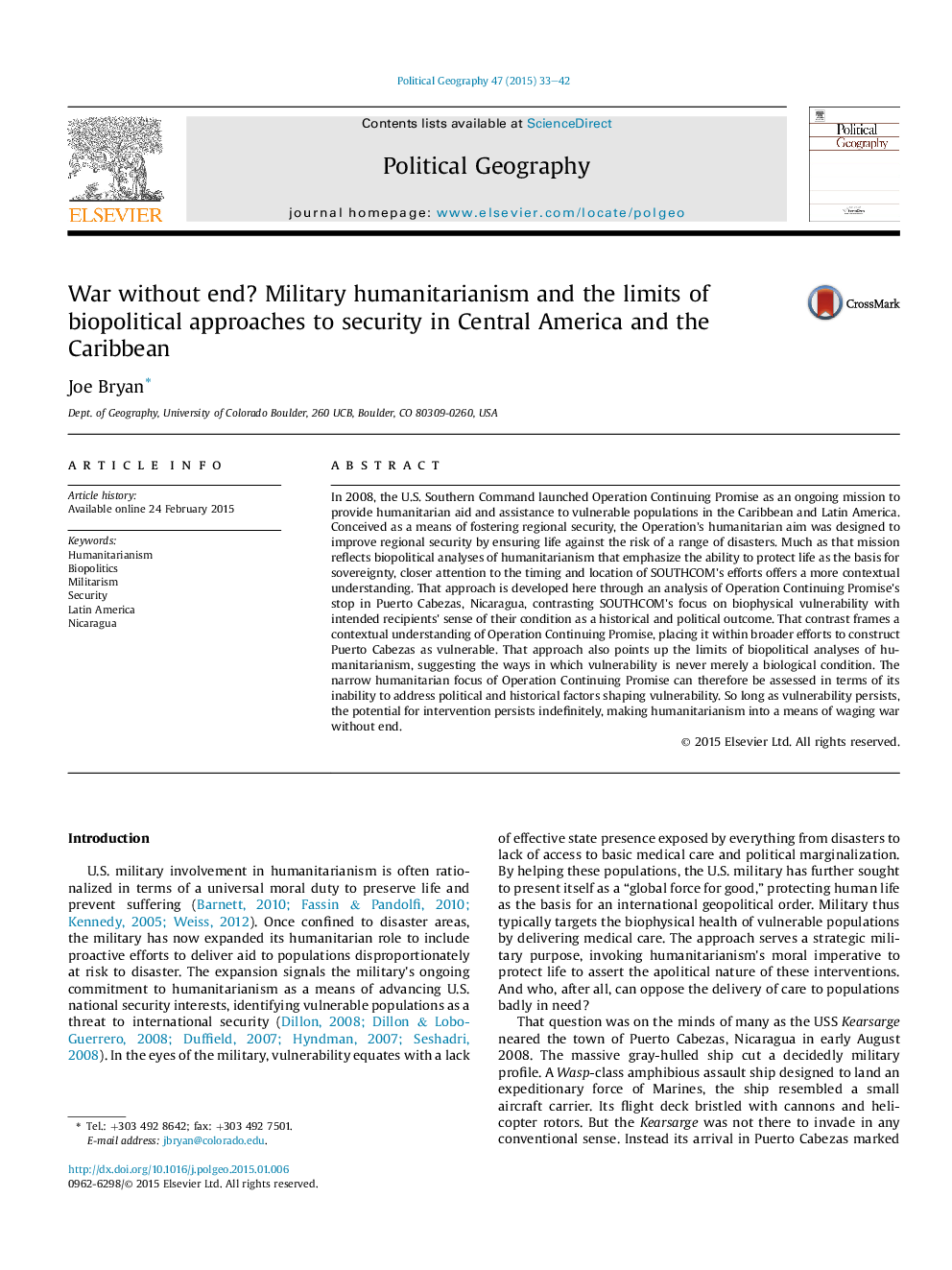| Article ID | Journal | Published Year | Pages | File Type |
|---|---|---|---|---|
| 7493238 | Political Geography | 2015 | 10 Pages |
Abstract
In 2008, the U.S. Southern Command launched Operation Continuing Promise as an ongoing mission to provide humanitarian aid and assistance to vulnerable populations in the Caribbean and Latin America. Conceived as a means of fostering regional security, the Operation's humanitarian aim was designed to improve regional security by ensuring life against the risk of a range of disasters. Much as that mission reflects biopolitical analyses of humanitarianism that emphasize the ability to protect life as the basis for sovereignty, closer attention to the timing and location of SOUTHCOM's efforts offers a more contextual understanding. That approach is developed here through an analysis of Operation Continuing Promise's stop in Puerto Cabezas, Nicaragua, contrasting SOUTHCOM's focus on biophysical vulnerability with intended recipients' sense of their condition as a historical and political outcome. That contrast frames a contextual understanding of Operation Continuing Promise, placing it within broader efforts to construct Puerto Cabezas as vulnerable. That approach also points up the limits of biopolitical analyses of humanitarianism, suggesting the ways in which vulnerability is never merely a biological condition. The narrow humanitarian focus of Operation Continuing Promise can therefore be assessed in terms of its inability to address political and historical factors shaping vulnerability. So long as vulnerability persists, the potential for intervention persists indefinitely, making humanitarianism into a means of waging war without end.
Related Topics
Social Sciences and Humanities
Arts and Humanities
History
Authors
Joe Bryan,
